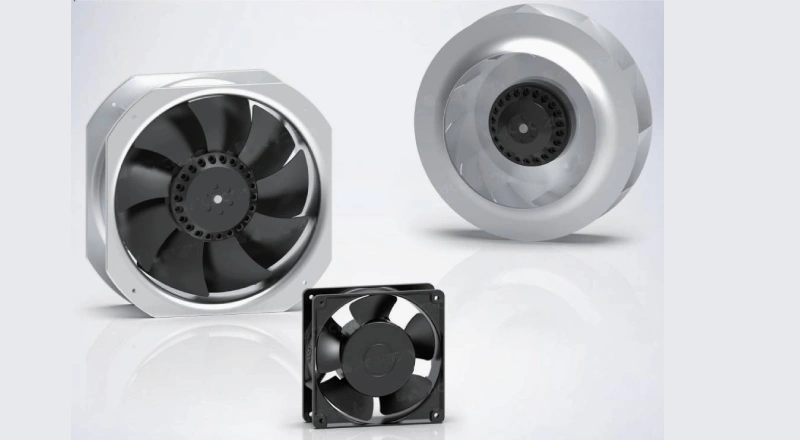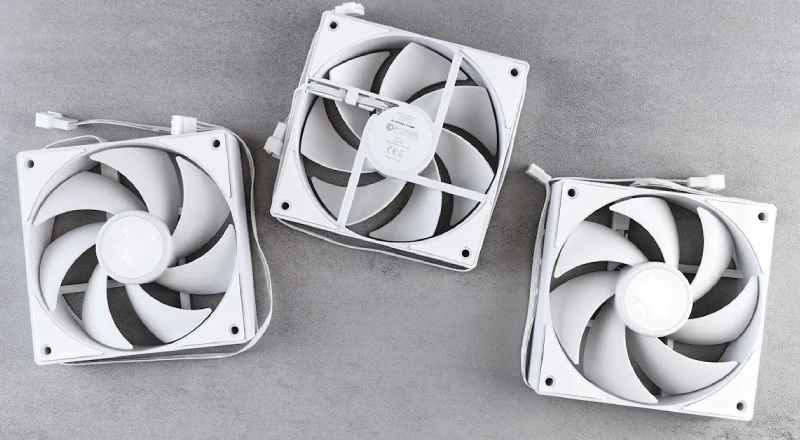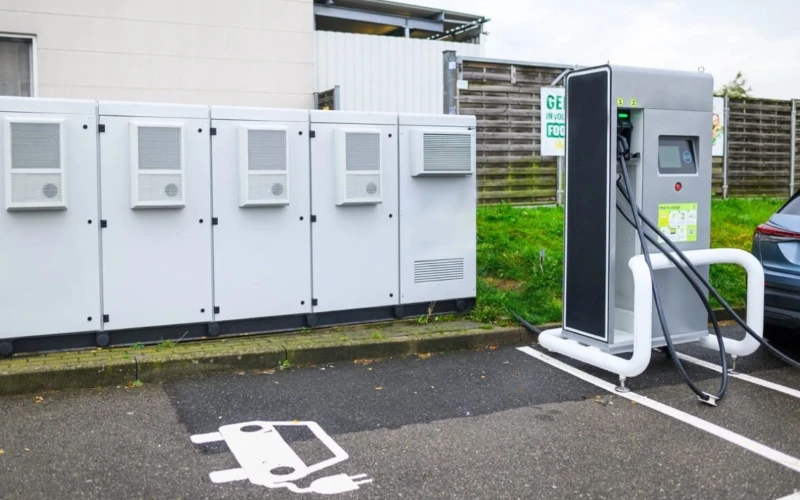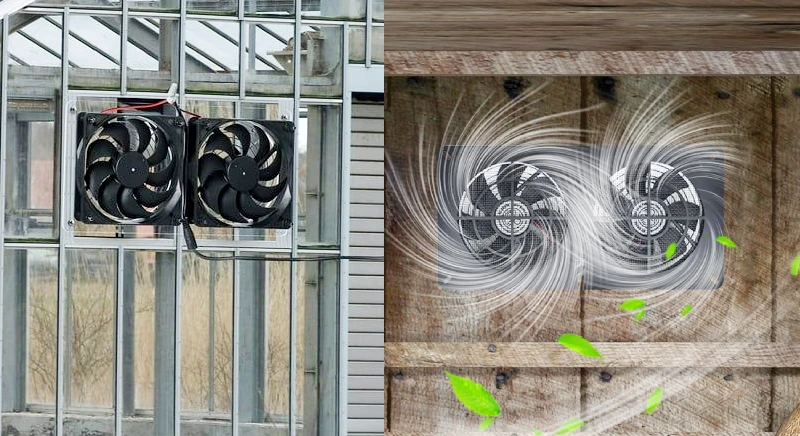When you compare a forward curved vs backward curved centrifugal fan, you’ll notice that the blade shape changes everything. Forward curved blades push more air at low pressure, while backward curved blades handle higher pressure and last longer. Choosing the right centrifugal fans for your cabinet or industrial setup helps protect your sensitive equipment and keeps things running smoothly. Linkwell stands out as a trusted name for reliable fan solutions in electrical enclosures and computer chassis.
| Feature | Forward Curved Fans | Backward Curved Fans |
|---|---|---|
| Airflow | High airflow, low pressure | Lower airflow, high pressure |
| Energy Efficiency | Best for low-pressure tasks | Best for high-pressure tasks |
| Noise | Quieter | Can be louder |
| Lifespan | Shorter | Longer |
| Cost | Lower | Higher |
| Applications | HVAC, residential | Industrial, high-pressure |
Key Takeaways
- Forward curved fans excel in high airflow at low pressure, making them ideal for clean rooms and HVAC systems.
- Backward curved fans handle higher pressure and are more energy-efficient, saving you money in the long run.
- Noise levels differ; forward curved fans are quieter, while backward curved fans may produce more sound due to their design.
- Choosing the right fan depends on your specific needs; consider airflow, pressure, and noise requirements before making a decision.
- Linkwell offers reliable fan solutions tailored to your applications, ensuring optimal performance and energy savings.
Forward Curved vs Backward Curved Centrifugal Fan Comparison

Blade Design Differences
When you look at the blade design, you’ll see why the forward curved vs backward curved centrifugal fan debate matters. The blades on a forward curved centrifugal blower curve in the same direction as the fan’s rotation. This gives the impeller fan centrifugal a paddlewheel look. Backward curved centrifugal fans, on the other hand, have blades that curve away from the direction of rotation. These backward inclined fans are larger and more curved, which helps with centrifugal fan efficiency.
Here’s a quick table to help you spot the differences:
| Feature | Forward Curved Fans | Backward Curved Fans |
|---|---|---|
| Blade Direction | Curves with rotation | Curves away from rotation |
| Blade Design | Paddlewheel style | Larger, more curved blades |
| Efficiency | Lower, best for low pressure | Higher, best for high pressure |
| Applications | Clean room, air handling units | Versatile, industrial, HVAC |
You’ll find that both types of centrifugal fans use strong materials like steel or aluminum. This helps them last longer in tough environments. Forward curve blowers work well for moving lots of air at low pressure. Backward curved fans handle higher pressure and are more energy-efficient.
Tip: If you need a fan for a clean room or a place with lots of dust, look for blades made from stainless steel. They resist corrosion and last longer.
Airflow and Pressure
Airflow is the main reason you choose one centrifugal fan type over another. Forward curved centrifugal fans push a large volume of air, but they don’t create much pressure. That’s why you see them in places where you need gentle, steady airflow, like air handling units or clean rooms.
Backward curved centrifugal fans excel when you need higher pressure. These backward inclined blowers can move air through long ducts or tight spaces. They’re perfect for industrial settings where strong airflow and pressure matter.
Here’s a table that shows how airflow and pressure compare:
| Fan Type | Airflow Capacity | Static Pressure Capability |
|---|---|---|
| Forward Curved | High airflow | Lower efficiency at high pressure |
| Backward Curved | Moderate airflow | Excels at high pressure |
If you need to cool a control cabinet or push air through a filter, you’ll want to match the centrifugal fan characteristics to your needs. Forward curved vs backward curved centrifugal fan selection depends on whether you need more airflow or more pressure.
Efficiency and Energy Use
You care about energy bills, right? Centrifugal fan efficiency makes a big difference over time. Backward curved centrifugal fans usually score higher on efficiency ratings. They reach 80–85%, while forward curved centrifugal fans hit around 60–70%. That means backward curved fans use less power and cost less to run in the long term.
| Fan Type | Efficiency Rating (%) |
|---|---|
| Backward Curved | 80–85 |
| Forward Curved | 60–70 |
Backward curved centrifugal blowers are ideal for clean air applications, ventilation, and cooling systems in industrial settings. They save you money because they use less energy. Forward curved centrifugal blowers work well for low-pressure jobs, but they can cost more to operate if you need higher pressure.
Note: If you want to lower your operational costs, choose a backward curved fan for high-pressure environments. You’ll see the savings add up over time.
Noise Levels
Noise matters, especially if you’re working in a data center or a lab. Forward curved centrifugal fans tend to run quieter, with noise levels around 80 dB. Backward curved fans are a bit louder, averaging about 75 dB. The difference isn’t huge, but it can make your workspace more comfortable.
| Fan Type | Noise Level (dB) |
|---|---|
| Forward Curved | 80 |
| Backward Curved | 75 |
In sensitive places, you want a fan that keeps noise down. Forward curved centrifugal fans fit well in compact spaces and help reduce vibration. If you need strong airflow and don’t mind a little extra noise, backward inclined centrifugal fans are a solid choice.
Block Quote: Low noise fans are best for offices, labs, and data centers. They keep things quiet and help everyone focus.
Forward Curved Fans: Pros and Cons
Advantages
When you look at forward curved fans, you’ll notice they offer several benefits that make them a popular choice for many applications. You get high airflow from a compact size, which is great if you need to move a lot of air in a small space. The double inlet forward curved centrifugal blower design lets you deliver impressive volume without taking up much room. You’ll find these fans easy to install, thanks to their simple construction.
- You save money because forward curved fans cost less to produce. Their design keeps manufacturing expenses down.
- You enjoy excellent airflow capacity, which works well for places needing strong air circulation.
- You experience quieter operation. The curved centrifugal fans blade design reduces turbulence, so you hear less noise.
- You benefit from a compact footprint. Forward curve blowers fit into tight spaces, making them ideal for cabinets and enclosures.
Forward curved fans shine in low-pressure, high-volume airflow scenarios. You get optimized performance in these conditions, unlike backward curved fans, which focus on high-pressure tasks. If you need to cool a control cabinet or ventilate a telecom box, forward curved fans handle the job with ease.
Tip: If you want a fan that’s easy to install and keeps noise down, forward curved fans are a smart pick for your next project.
Limitations
Forward curved fans do have some limits, especially when you compare them to backward curved fans. You’ll see these fans struggle in high-pressure environments. Their efficiency drops when you need to push air through long ducts or filters. You also need to keep the air clean, since dust and debris can affect performance.
| Limitation | Impact on HVAC System Design |
|---|---|
| Lower efficiency at higher pressures | Not suitable for systems with high pressure; airflow and system efficiency decrease. |
| Limited static pressure capability | Only effective for low pressure; inadequate for high resistance or significant pressure drops. |
| Sensitivity to dust and debris | Requires clean air; necessitates more cleaning and design modifications for accessibility and air quality. |
| Need for regular blade cleaning | Increased maintenance requirements lead to more downtime and higher operational costs. |
You’ll spend more time on maintenance with forward curved fans. Regular cleaning keeps them running smoothly. If your system faces high resistance or needs strong pressure, backward curved fans might serve you better. Always match the centrifugal fan type to your specific needs for best results.
Backward Curved Fans: Pros and Cons
Advantages
You’ll notice that backward curved fans stand out in industrial cooling and ventilation. These fans deliver impressive energy savings, especially when you run systems around the clock. If you compare backward curved fans to forward curved fans, you’ll see a 15–20% higher Energy Efficiency Ratio. That means you save money every month.
Backward curved fans work well in harsh environments. You get IP55 protection, so corrosive substances and dust won’t damage your fan. The design uses 304 or 316 stainless steel impellers and hot-dip galvanized casings. This gives you durability and reliability, even when conditions get tough.
Here’s a quick table showing why backward curved fans are a smart choice:
| Advantage | Description |
|---|---|
| Higher Energy Efficiency Ratio | 15–20% better EER than forward curved fans |
| IP55 Protection | Shields against corrosive substances and dust |
| High Static Efficiency | Saves energy and lowers costs |
| Non-Overloading Characteristic | Won’t overheat or overload, even under heavy use |
| Material Quality | Stainless steel impellers and galvanized casings |
| High MTBF | Over 80,000 hours between failures |
Backward curved fans also reduce air separation and recirculation. You get more airflow for the same motor power. If you need a fan for long-running systems, backward curved fans help you cut energy costs. The curved blade design and larger size give you better airflow control and less energy loss. You’ll find backward curved fans ideal for industrial settings, data centers, and places where reliability matters.
Tip: If you want a fan that lasts and saves energy, backward curved fans are the way to go.
Limitations
Backward curved fans do have some drawbacks. You’ll pay more upfront because these fans cost more to manufacture. The larger blades and complex design add to the price. If you compare backward curved fans to forward curved fans, you’ll see the difference in your budget.
Noise is another factor. Backward curved fans generate more sound due to their bigger blades and higher airflow. You might notice increased turbulence, especially in compact spaces. If you need a fan for a quiet office or a small enclosure, forward curved fans might suit you better.
Here’s a table that highlights the main limitations:
| Limitation | Explanation |
|---|---|
| Higher Noise Levels | Larger blades and high airflow create more turbulence and sound |
| Higher Cost | Manufacturing complexity and blade size increase the price |
Backward curved fans excel in tough environments. They handle particulates and corrosive substances better than forward curved fans. You get a robust fan that keeps working, even when conditions aren’t perfect. If you need a fan for a compact or low-budget application, you might want to look at forward curved fans instead.
Note: Always match the fan type to your needs. Backward curved fans shine in demanding, high-pressure jobs, but forward curved fans work better in quiet, budget-friendly spaces.
Applications in Linkwell Electrical Enclosure Fan
When you look at Linkwell electrical enclosure fan products, you see how they fit a wide range of applications. You get reliable cooling for your industrial control cabinets and telecom signal boxes. Linkwell uses both forward curved and backward curved centrifugal fans to match your specific needs.
Industrial Control Cabinets
You want your control cabinets to stay cool and safe. Linkwell fans help you do that. You can choose from different centrifugal fan types to get the right airflow and pressure. Forward curved centrifugal blowers work well for high-volume, low-pressure applications. Backward curved centrifugal fans handle high-pressure environments and keep your equipment running longer.
Here are some common applications for Linkwell fans in industrial control cabinets:
- Forced ventilation for automatic control devices
- Electronics cooling to prevent heat build-up
- Air handling units for steady airflow
- General ventilation for large spaces
- Indoor duct dust removal and exhaust
You get energy-efficient fans with smart speed controls. These fans save you money on power bills and reduce energy waste. Linkwell designs fans with brushless motors and high-precision ball bearings. You get up to 100,000 hours of operation without interruption.
Tip: If you need a fan for harsh conditions, Linkwell uses premium materials that stand up to high temperatures and humidity.
Check out this table to see how Linkwell fans improve your applications:
| Feature | Benefit |
|---|---|
| Energy Efficiency | Saves 20%–30% on power costs |
| Extended Lifespan | Up to 100,000 hours of operation |
| Exceptional Durability | Stable in tough environments |
| Certified Quality | Meets ISO 9001 and CE standards |
Telecom Signal Boxes
Telecom signal boxes need steady airflow to protect sensitive electronics. Linkwell centrifugal fans keep your signal boxes cool and safe. You can use forward curved centrifugal fans for quiet, low-pressure applications. Backward curved centrifugal blowers work best when you need strong airflow through filters or long ducts.
Here are some applications for Linkwell fans in telecom signal boxes:
- Heat dissipation for electronic components
- Air purification and pollution control
- Environmental protection for sensitive devices
- Reliable forced ventilation in compact enclosures
You get fans that are easy to install and maintain. Linkwell offers certified, energy-saving solutions for all your telecom applications. You can trust these fans to keep your systems running smoothly.
Note: Linkwell fans help you reduce downtime and protect your investment in telecom infrastructure.
Applications in Linkwell Computer Chassis Fan

Data Centers
You know how important cooling is in data centers. The right fan keeps your servers running smoothly and prevents overheating. Linkwell uses both forward curved centrifugal blower and backward curved centrifugal fan designs in their computer chassis fan products. These types of centrifugal fans help you manage airflow and temperature in different applications.
Take a look at how each fan blade works in data center applications:
| Type of Fan Blade | Application | Benefits |
|---|---|---|
| Forward Curved Blades | HVAC systems, electronics cooling | High airflow rates |
| Backward Curved Blades | Cleanrooms, data centers | Better airflow control, higher efficiency |
You get cooling fans that maintain optimal temperatures and airflow. Backward curved centrifugal fans boost energy efficiency and give you better airflow control. These applications keep your data center equipment safe and extend its lifespan. You can rely on Linkwell for fans that fit your specific needs, whether you need high airflow or precise pressure control.
Tip: For data center applications, choose fans with advanced speed management. You get the best balance between cooling and energy savings.
Electronics Manufacturing
Electronics manufacturing needs reliable cooling for sensitive equipment. Linkwell computer chassis fans deliver high performance in these applications. You get fans with superior CFM airflow, ultra-low noise levels, and advanced PWM control. These features make your workspace comfortable and keep your machines running without interruption.
Here’s a quick look at the performance metrics that matter in electronics manufacturing applications:
| Metric | Description |
|---|---|
| CFM Airflow | Superior airflow for maximum cooling |
| dBA Noise Levels | Ultra-low noise levels for silent operation |
| PWM Control | Advanced control for intelligent speed management |
| MTBF Ratings | Exceptional ratings for reliability |
You can customize Linkwell fans for different applications. Whether you need a fan for a compact workstation or a large assembly line, you get options that match your requirements. These centrifugal fans help you reduce downtime and improve productivity in electronics manufacturing applications.
- High airflow keeps components cool in all applications.
- Low noise fans create a better environment for workers.
- Advanced controls let you adjust speed for different applications.
- Reliable fans mean less maintenance and fewer interruptions.
Note: Linkwell offers customizable solutions for all your computer chassis fan applications. You get high-performance, energy-efficient fans that fit any project.
Choosing the Right Fan for Your Needs
Key Selection Factors
Choosing the right centrifugal fan type can feel tricky, but you can break it down by looking at a few key factors. Start by thinking about your airflow needs. If you want high airflow in a clean environment, a forward curved centrifugal blower might be your best bet. For precise airflow management and higher pressure, a backward curved centrifugal fan works better.
Here’s a quick table to help you compare:
| Selection Factor | Forward Curved Fans | Backward Curved Fans |
|---|---|---|
| Airflow Requirements | Better for high airflow capacity | Better for precise airflow management |
| Pressure Requirements | Suitable for low pressure applications | Excels in high pressure applications |
| Noise Considerations | Operate at lower noise levels | Generally noisier, but quieter models exist |
| Environmental Conditions | Suitable for clean air environments | Better for dusty or contaminated environments |
| Cost Considerations | More cost-effective initially | Higher upfront cost, but better long-term savings |
You should also look at static pressure. If your system has lots of filters or long ducts, you need a fan that can handle higher pressure. Noise matters too. If you work in an office or lab, quieter fans make a big difference. Cost is another factor. Forward curved fans cost less at first, but backward curved fans save you money over time because of their efficiency.
Tip: Always check the airflow and pressure ratings before you buy. This helps you avoid problems with overheating or poor ventilation.
When you match the centrifugal fan characteristics to your application, you get better performance and fewer headaches. Think about the environment, the amount of airflow you need, and how much noise you can tolerate.
Linkwell Product Support
You don’t have to figure this out alone. Linkwell offers expert advice to help you choose the right centrifugal fan type for your project. You can reach out for technical support if you have questions about airflow, pressure, or installation. If you need something special, Linkwell provides custom solutions to meet your exact requirements.
Here’s how Linkwell’s product range supports different needs:
| Feature | Benefit |
|---|---|
| Optimal airflow design | Maintains system stability |
| Industrial-grade materials | Extends service life |
| Low-power consumption | Supports sustainable operations |
You can use Linkwell fans in control cabinets, distribution cabinets, and computer chassis. These fans help with heat dissipation and keep your systems running smoothly. The installation process is simple, and you get reliable cooling for any application.
Note: Linkwell’s team is ready to help you find the perfect fan, whether you need high airflow, low noise, or energy savings.
When you compare forward curved vs backward curved centrifugal fan options, you see clear differences in airflow, efficiency, and maintenance. Backward curved fans give you better airflow control, higher efficiency, and less dust buildup, making them perfect for tough environments. Forward curved fans move more airflow at low pressure and fit compact spaces. Linkwell helps you match the right fan to your airflow needs, offering certified, energy-efficient solutions. You get reliable performance, lower costs, and peace of mind with every Linkwell fan.
Ready to upgrade your airflow? Trust Linkwell for the best forward curved vs backward curved centrifugal fan solutions.
FAQ
What is the main difference between a forward curved centrifugal blower and a backward curved centrifugal fan?
You’ll notice the forward curved centrifugal blower pushes more air at low pressure. The backward curved centrifugal fan handles higher pressure and offers better centrifugal fan efficiency. Each fits different needs in cooling and ventilation.
How do I choose the right centrifugal fan type for my application?
Think about your airflow and pressure needs. For high airflow in clean spaces, pick a forward curved centrifugal fan. For high pressure or dusty areas, go with a backward curved centrifugal blower or backward inclined blower. Always check the centrifugal fan characteristics.
Are backward curved fans more energy efficient than forward curve blowers?
Yes! Backward curved fans usually have higher centrifugal fan efficiency. They save you energy and money over time, especially in demanding environments. You get better performance with less power.
Can I use both types of centrifugal fans in one system?
You can! Some systems use both forward curve blowers and backward inclined fans for different zones. This setup lets you balance airflow and pressure for the best results.
What makes Linkwell’s centrifugal fan design stand out?
Linkwell uses advanced centrifugal fan design and high-quality materials. You get reliable impeller fan centrifugal options, including backward inclined centrifugal fan and backward blower models. These fans deliver long life, energy savings, and certified safety for your projects.




